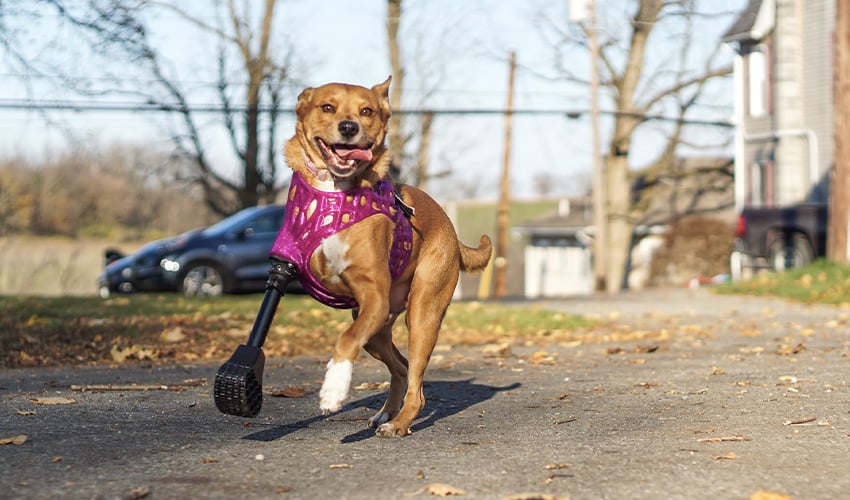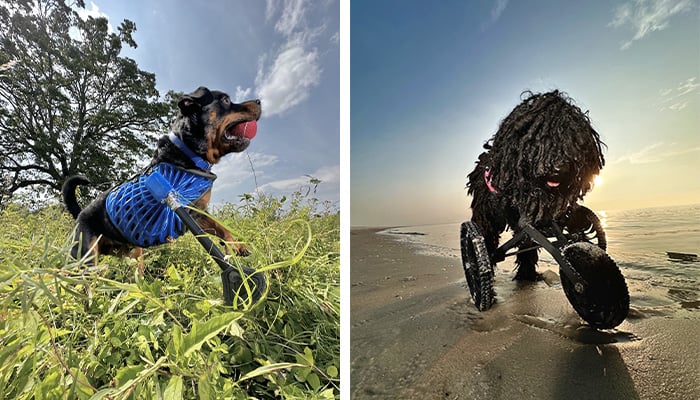3D Pets Can Help Dogs Back on Their Feet With Just a 3D Printer and a Smartphone

Almost half of all canine limb amputations are either due to cancer treatment or accidents. While there have been multiple efforts focused on animal prostheses, it has often been more difficult to find an effective and widespread solution. For example, dogs support 60% of their body weight on their front legs alone which is why it is so important to ensure that their weight is safely and evenly distributed. Without proper attention, a dog favoring one leg may develop more serious health conditions down the line. Fortunately, as advances in medical 3D printing have benefitted humans, so too has it helped our animal companions. To that end, New Jersey-based company 3D Pets has a simple goal, “to bring animal mobility into the 21st century”.
Formed as a subsidiary of 3D printing and design company, DiveDesign whom we have previously interviewed, the creation of 3D Pets as a separate entity gives their team the allowance to focus their resources and attention solely on the veterinary revolution. Their process involves creating custom dog prostheses for their canine clients. To do so, they have utilized FDM 3D printing and 3D scanning in order to map the accurate support and shape requirements of each animal. However unlike a large, cumbersome device used in some hospital or clinic, they use a technology much closer to home: smartphones.

3D Pets offers a modular design that can accommodate different types of prostheses.
3D Pets Custom Solution Focused on Individual Needs
Not the first object you may think of when thinking about 3D scanning, using a smartphone makes ingenious use of modern technology and the advanced cameras that are quickly becoming run-of-the-mill on new phones. The process takes several steps: after filling out a questionnaire in order to determine the best style of device needed for the patient, the company sends the client a molding kit to create a rigid mold of the animal’s body. Once the mold is complete, the team is able to use a smartphone’s LiDAR and TrueDepth cameras to get a 360 degree scan the mold that can be uploaded as a digital file. After rendering in a modeling software application, the mold can be modified to best suit the animal’s body. This fine tuning process is an important step because it considers the dog’s unique shape, size and prosthetic need in order to maximize both their comfort and mobility.
The end result is customized harness which is then ready to be 3D printed using an FDM 3D printer. The exact details of the machine used are not available, but the company does say that they use flexible TPU plastics available in several colors. After post-processing and the removal of any imperfections, the dog prosthesis is ready to be assembled and given to the lucky pup who will start their journey of re-learning how to walk on all fours again. This process has allowed scores of dogs to get back to a happy, active lifestyle and 3D Pets continues to make a difference in the lives of dogs and their human families who love them. For more information about 3D Pets and their work, check out their website HERE.
What do you think about 3D printed pet prostheses? Let us know in a comment below or on our LinkedIn, Facebook, and Twitter pages! Don’t forget to sign up for our free weekly Newsletter here, the latest 3D printing news straight to your inbox! You can also find all our videos on our YouTube channel.
*All Photo Credits: 3D Pets






